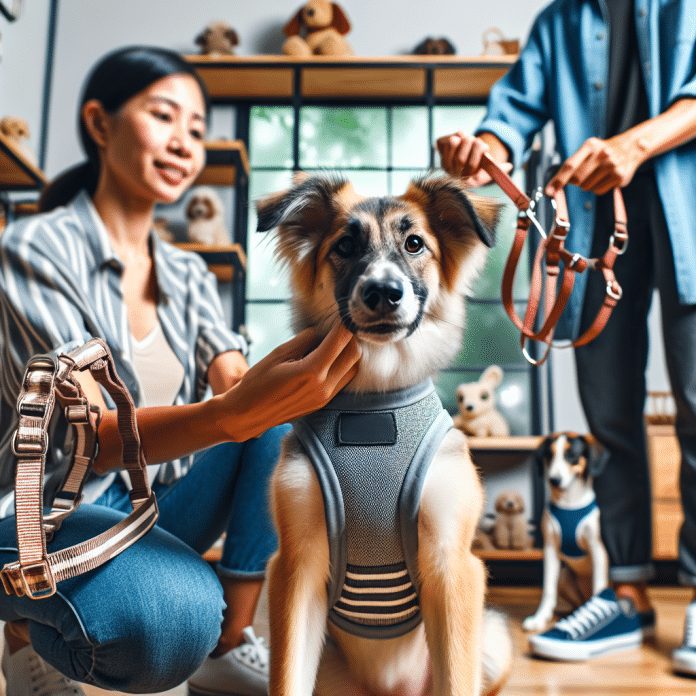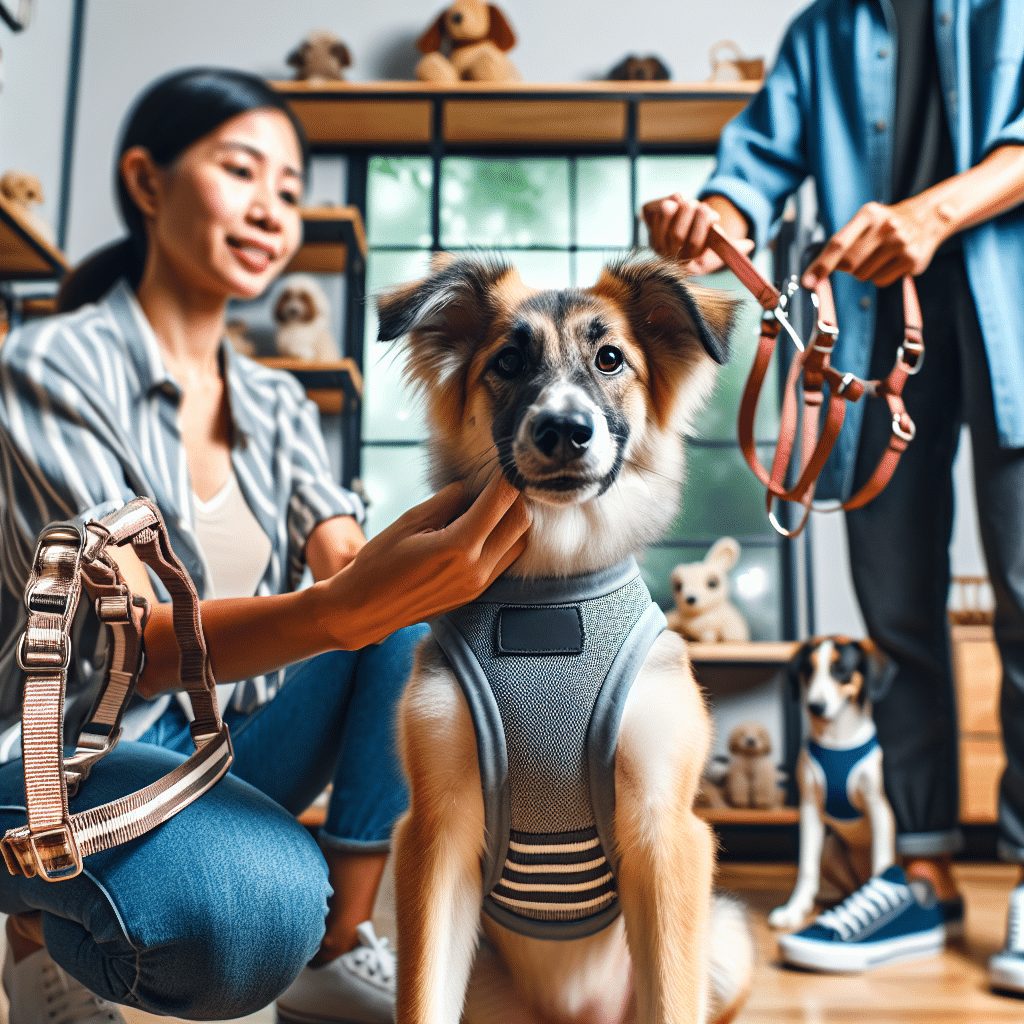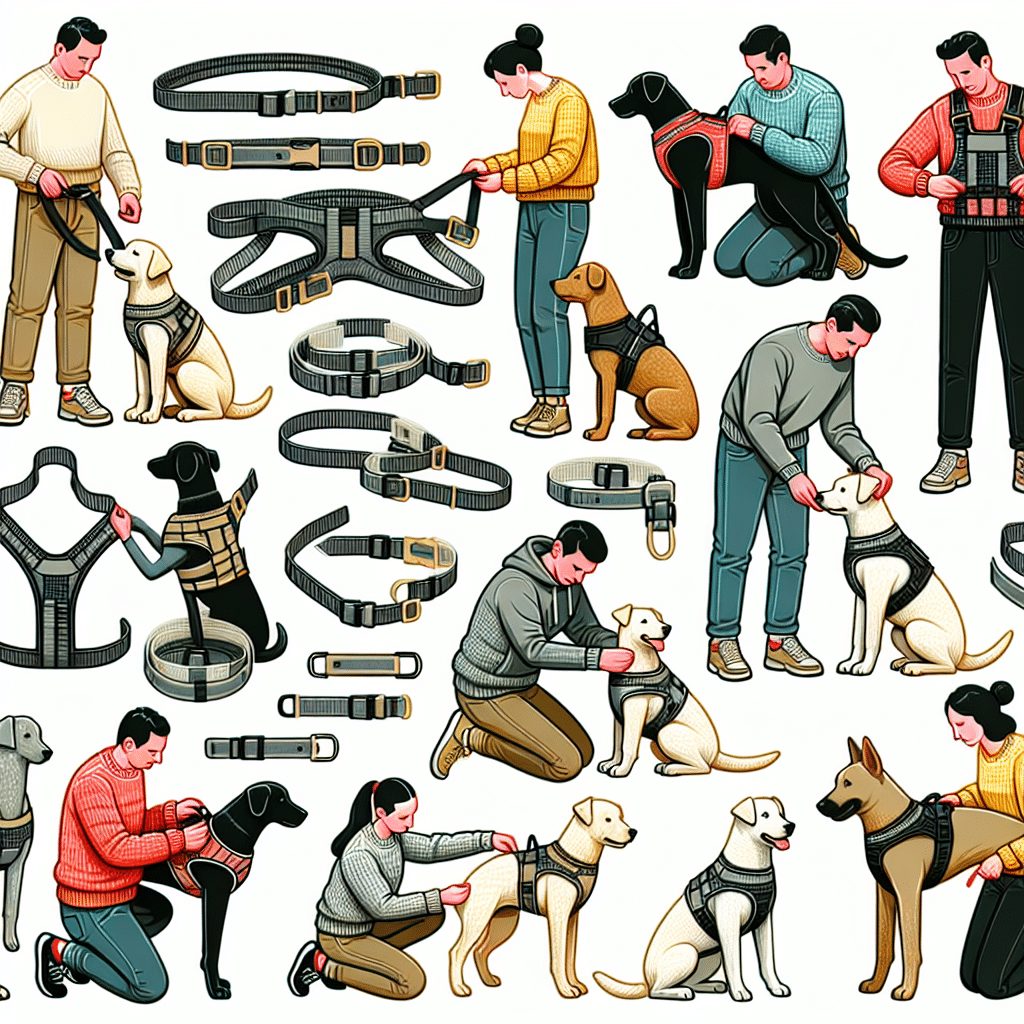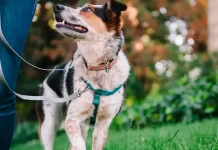If you’re tired of dealing with your dog’s uncomfortable chafing caused by their harness, fret no more! We understand how important your furry friend’s comfort is to you, so we’re here to help. In this article, we’ll explore effective tips and tricks to prevent your dog’s harness from causing any discomfort or irritation. Say goodbye to chafing and hello to a happy and content pup!
Choosing the right harness
When it comes to the comfort and well-being of your furry friend, choosing the right harness is crucial. There are several factors to consider when selecting a harness for your dog. First and foremost, you should take into account the size and breed of your dog. Different harnesses are designed to cater to specific breeds and sizes, ensuring a better fit and minimizing the risk of chafing.
Harnesses that are adjustable are also important as they allow you to customize the fit according to your dog’s measurements. This way, you can avoid any unnecessary rubbing or pressure points that may cause discomfort or chafing. Additionally, look for harnesses made of high-quality materials that are breathable and gentle on your dog’s skin.
Inspecting the harness
Before you even put the harness on your dog, it’s vital to inspect it for any signs of damage or wear. Regularly checking the harness will help you identify any potential issues that could lead to chafing. Look for frayed edges, loose stitching, or any other signs of wear and tear. If you notice any of these, it’s best to replace the harness to ensure your dog’s safety and comfort.
Proper adjustment of the harness
Proper adjustment of the harness is key to preventing chafing. Once you’ve chosen the right harness for your dog, it’s important to take the time to adjust it correctly. Ensure that the harness isn’t too tight, as tight straps can dig into your dog’s skin and cause chafing. On the other hand, if the harness is too loose, it may rub against your dog’s body and lead to irritation.
A properly adjusted harness should fit snugly but comfortably around your dog’s body. You should be able to fit a couple of fingers between the harness and your dog’s skin. Regularly check the fit of the harness, especially as your dog grows or gains/loses weight, to ensure it remains comfortable and doesn’t cause any chafing.
Using padding or fabric covers
If you find that your dog’s harness still causes discomfort or chafing, consider adding some padding or using fabric covers. These additions can provide an extra layer of cushioning and prevent direct contact between your dog’s skin and the harness straps. Look for padded harnesses, or you can even create your own padding by using soft materials like fleece or neoprene.
Fabric covers are another option to consider. These covers can be slipped over the straps of the harness, acting as a barrier between your dog’s skin and the harness itself. They often come in various colors and patterns, allowing you to customize your dog’s harness while ensuring their comfort and protection against chafing.
Employing anti-chafing products
In addition to padding and fabric covers, there are also anti-chafing products available that can help prevent discomfort and chafing. These products, such as balms or sprays, can be applied to the areas where the harness comes into contact with your dog’s skin. They create a protective barrier that reduces friction and irritation, promoting your dog’s comfort.
When using anti-chafing products, make sure to follow the manufacturer’s instructions and choose products that are specifically formulated for use on dogs. Regular application and reapplication may be necessary, especially during long walks or hot weather conditions.
Frequent cleaning and maintenance
Keeping your dog’s harness clean and well-maintained is essential for preventing chafing. Regularly inspect the harness for dirt, debris, or any other substances that may cause discomfort to your dog’s skin. Depending on the material of the harness, you may be able to hand wash it or put it in the washing machine following the manufacturer’s instructions.
Proper maintenance also includes drying the harness thoroughly before using it again. Moisture trapped in the harness can lead to skin irritation and chafing. Additionally, it’s a good idea to have a spare harness on hand to ensure your dog always has a clean and dry option available.
Considering a different harness design
If you’ve tried various adjustments, added padding, and utilized anti-chafing products, but your dog’s harness still causes chafing, it may be time to consider a different harness design. Different dogs have different body shapes and sizes, and sometimes certain harness designs may not be suitable for your dog’s specific needs.
Consulting with a professional, such as a veterinarian or a knowledgeable pet store staff member, can help you identify alternative harness designs that may be better suited for your dog. They can provide guidance based on your dog’s breed, size, and individual characteristics, ensuring a more comfortable and chafe-free experience.
Taking breaks from harness use
While harnesses are useful tools for walking and restraining your dog, it’s important to give your furry friend some breaks from wearing one. Extended periods of constant harness use can increase the likelihood of chafing and discomfort. Whenever it’s safe and appropriate to do so, give your dog some off-leash time or use a collar and leash instead of a harness.
Allowing your dog to have some freedom without a harness can help relieve any pressure points and give their skin a chance to breathe. Just be sure to supervise them appropriately during this time to ensure their safety and prevent any potential accidents.
Overall monitoring of your dog’s comfort
Ultimately, the best way to ensure your dog’s comfort and prevent chafing is to consistently monitor their well-being. Pay attention to any signs of discomfort, such as excessive scratching, redness, or hair loss around or underneath the harness. These could be indications of chafing or irritation.
Take note of your dog’s behavior while wearing the harness. If they frequently attempt to remove or resist wearing it, it may be a sign that they are experiencing discomfort. By regularly monitoring your dog’s comfort, you can address any issues promptly and make necessary adjustments to prevent further chafing.
Consulting a professional
If you’ve tried various strategies to prevent your dog’s harness from chafing, but the issue persists, it’s crucial to consult a professional. Veterinarians, dog trainers, and experienced pet store staff members can provide valuable insights and guidance tailored to your specific situation. They can assess your dog’s individual needs, recommend alternative harness options, and offer additional advice to ensure your dog’s comfort and well-being.
Remember, your dog’s comfort should always be a top priority. By selecting the right harness, making necessary adjustments, and employing additional preventive measures, you can help keep your furry friend happy, healthy, and free from chafing!











































